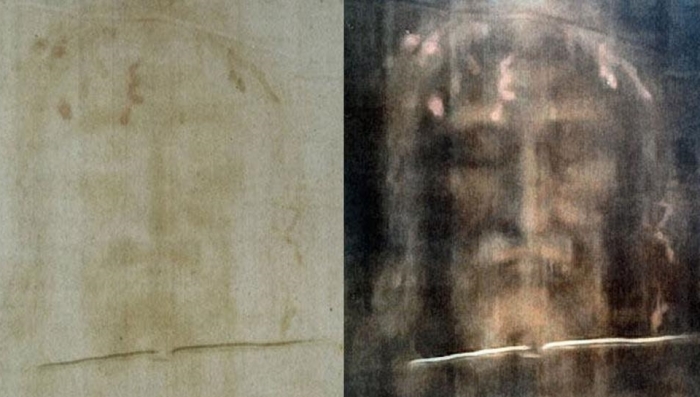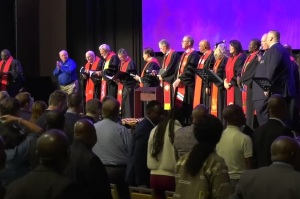Bloodstains found on Shroud of Turin consistent with torture Christ suffered, researcher says

A scientist in Italy has provided new research suggesting the bloodstains found on the Shroud of Turin — a linen cloth that many believe was Jesus Christ's burial garment — are consistent with the types of torture faced by Jesus as described in biblical accounts.
A study by Professor Giulio Fanti from the University of Padua finds a pattern of bloodstains that align with historical descriptions of the crucifixion.
Fanti has studied the Shroud of Turin for over 25 years and published his findings through the Shroud Science Group. He claims that a macroscopic and microscopic analysis finds that the markings and stains on the cloth are "consistent with the description of Jesus Christ in the holy Bible and, in particular, within the four canonical Gospels."
"There are hundreds of reddish spots of varying shapes and sizes from centimeters to a few decimeters, which almost completely overlap the body image imprinted on it and which seem perfectly consistent with the different types of torture suffered by Jesus, who was wrapped in it as a corpse," Fanti wrote.
"Numerous bloodstains [1-5] scattered throughout the double body image of the HST show evidence that Jesus of the HST was tortured [15]: bloodstained marks all over the body image which are consistent with pre-crucifixion flagellation, bloodstained marks on the head that are consistent with a 'crown' of thorns, blood marks on the hand and feet that are consistent with crucifixion and the bloodstain on the chest that evidences a post-mortem wound that corresponds with the post-mortem spear wound that Christ received as is described in the Bible," the study adds.
For many years, the shroud's age has been debated, especially following a 1988 study that dated it between 1260 and 1390 A.D.
The Consiglio Nazionale delle Ricerche, or National Research Council of Italy, in Bari, published findings in 2022 where a tiny sample from the shroud underwent a novel dating method called Wide-Angle X-ray Scattering.
The team, led by Professor Liberato De Caro, analyzed the structural degradation of linen fibers from the shroud securely stored at the Cathedral of San Giovanni Battista in Turin. Their findings indicate that the material could be 2,000 years old, aligning with the first century A.D., the time of Jesus. This data was first published in the peer-reviewed journal Heritage.
De Caro's team proposes that earlier results questioning the age authenticity were likely skewed by contamination from numerous factors, including repairs and environmental exposure over the centuries. The degree of cellulose aging in the linen analyzed is consistent with other first-century materials, De Caro told The Telegraph.
Bill Lauto, an environmental scientist in Long Island, has also pointed out that the characteristics of the shroud's image suggest a burst of radiant energy, a phenomenon that medieval technology could not reproduce, according to The Tablet. Lauto argues that this supports the notion of the shroud being created in a moment akin to what is described in the Gospels as the resurrection of Jesus.
The latest findings challenge the previously accepted view that the Shroud of Turin was a medieval creation.
The team in Bari is calling for further testing by independent laboratories worldwide to confirm these new results. The two linen samples, one from the shroud and another from the first-century Siege of Masada, are currently housed at the University of Padua and are awaiting further examination.
The researchers maintain that while their findings are significant, the authenticity of the shroud as the actual burial cloth of Jesus remains unproven by science alone.
"The technique we used is non-destructive, which is a huge advantage. It means the tests could be conducted again by another laboratory," De Caro told The Telegraph. "Science can take us only to a certain point. Everything beyond that is a matter of faith."





























